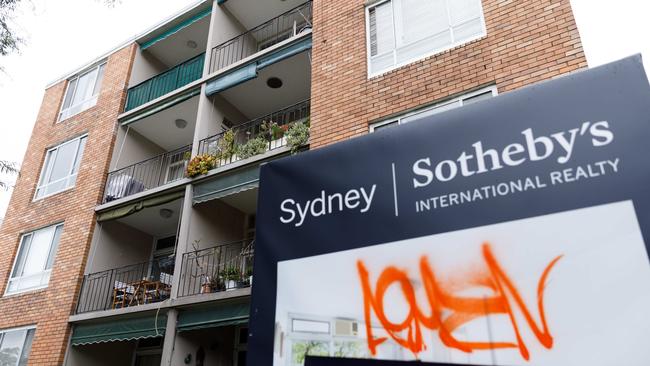Cut risk rules on young home borrowers would help more enter the market, says Barrenjoey
Barrenjoey says first-home buyers could borrow 1-3 per cent more and slash mortgage repayments under its suggestion to help more of them get into the market.

Business
Don't miss out on the headlines from Business. Followed categories will be added to My News.
First-home buyers would have cheaper loans would and be able to borrow up to 3 per cent more under a proposal outlined by investment bank Barrenjoey.
In a supplementary submission to a Senate Economics inquiry examining financial regulations and homeowners, Barrenjoey banks analyst Jon Mott has recommended a change to current lending rules.
Mr Mott said the Australian Prudential Regulation Authority should consider changing the risk weights it applies to loans given to younger borrowers, and implement a two tier system for those who buy off the plan or existing dwellings.
Mr Mott said lowering capital requirements under the changes to risk weightings would drive down the interest rates banks charged to these younger borrowers.
He said this could help younger borrowers with more affordable loans while still offering banks “adequate returns”.
The impact of the risk hit under Mr Mott’s proposed scheme would be offset against other more established borrowers who would see a slight increase to their risk weights “leaving aggregate mortgage (credit risk weights) unchanged”.
Mr Mott said Barrenjoey found that an average risk weight of 85 per cent for owner occupiers purchasing existing properties was a workable level under his proposal.
Buyers of off-the-plan properties could have a risk weight of around 70 per cent.
Mr Mott said these changes would lead to a 0.29 per cent reduction in interest rates for first-home buyers, saving them an average of $37,300 on a $600,000 loan over 30 years.
Barrenjoey’s modelling suggests first home buyers could borrow up to 1 to 3 per cent more under the scheme.
To counterbalance the proposal, average risk weights would be upped to around 110 per cent for other borrowers.
Mr Mott said the risk weights could be implemented for new lending.
“These changes would not lead to a movement in the average risk weights of the entire mortgage book, which would stay at around 25 per cent,” Mr Mott said.
He said the housing market was already extremely competitive, and that banks were now lending at or below their cost of capital, while brokers were dominating the market.
“As a result, we believe changes to the bank’s risk weightings would rapidly lead to changes in interest rates,” he said.
Barrenjoey’s latest submissions comes as several other lenders weigh in on the Senate inquiry, steered by Liberal Senator Andrew Bragg.
Westpac, in its contribution, said intervention was needed to address the “chronic issues facing the construction sector” and that the supply of new dwellings remained constrained.
“It is therefore Westpac’s position that the current financial regulation settings are not a major inhibitor to home ownership and should not be a major focus of policy debate,” Westpac’s submission said.
Senator Bragg’s inquiry will examine APRA’s current 3 per cent serviceability buffers banks impose on borrowers to test them for higher repayments if interest rates rise.
Westpac said the serviceability buffers had “proven to be an effective risk management setting through the recent period of rising interest rates”.
It said a key issue was the focus by developers on premium property, which commanded a higher return.
Westpac said governments should support measures to incentivise low and medium-value residential stock, possibly in the form of deferred or subsidised planning contributions which do not achieve hurdle returns.
“Westpac does not believe the market alone can solve the current structural challenges,” it said.
“Therefore, policy makers could consider time-bound options to provide confidence back into the market by protecting developments against contractor failure and cost escalations.”
However, Westpac also called for APRA to have a more flexible approach to risk tolerance for property construction financing “so that in the small number of cases where it
occurs, regulatory barriers don’t prevent banks from being able to provide lending in
line with risk appetite”.
More Coverage
Originally published as Cut risk rules on young home borrowers would help more enter the market, says Barrenjoey





